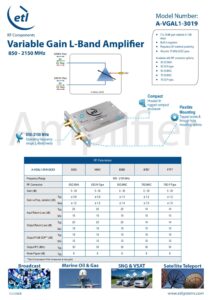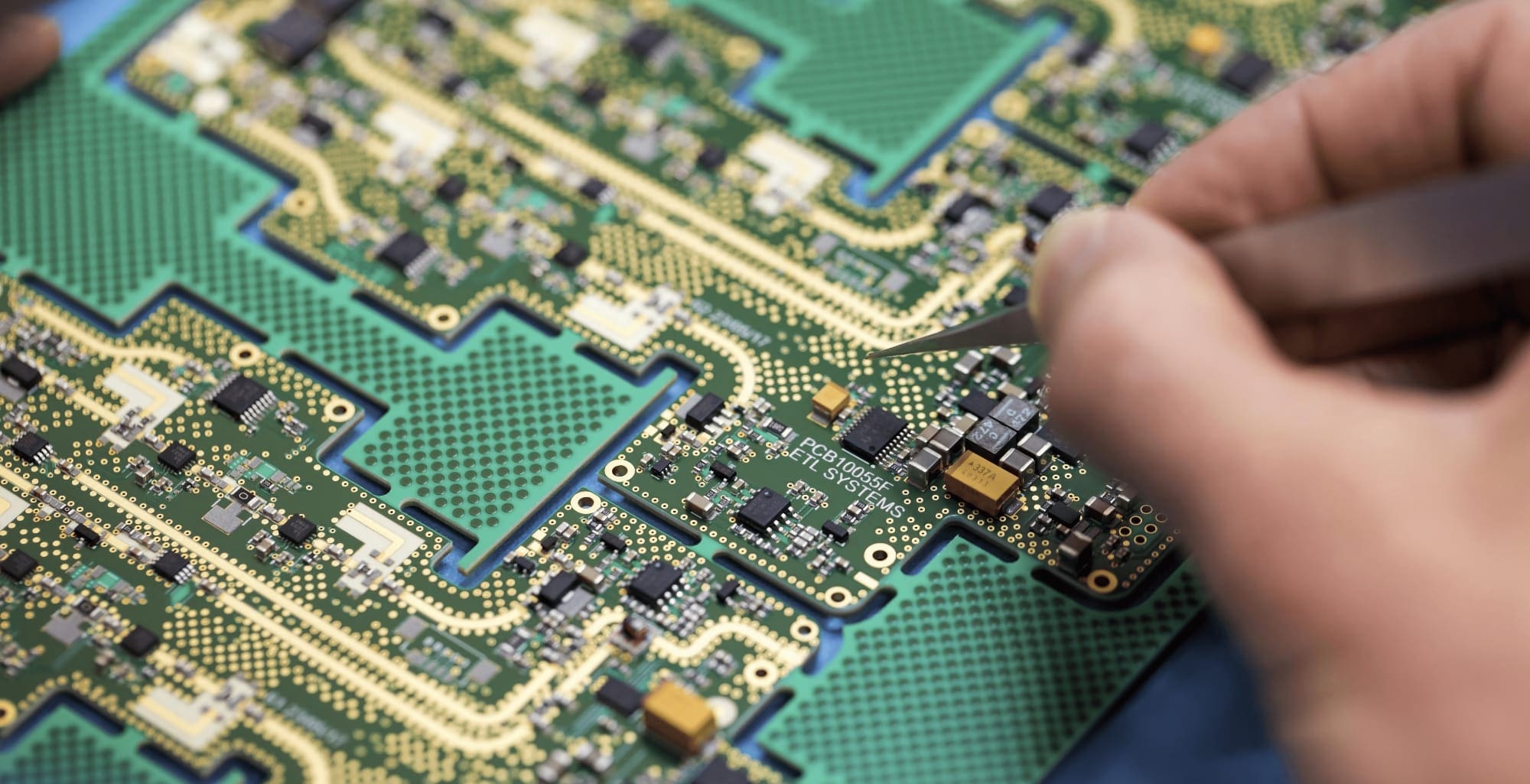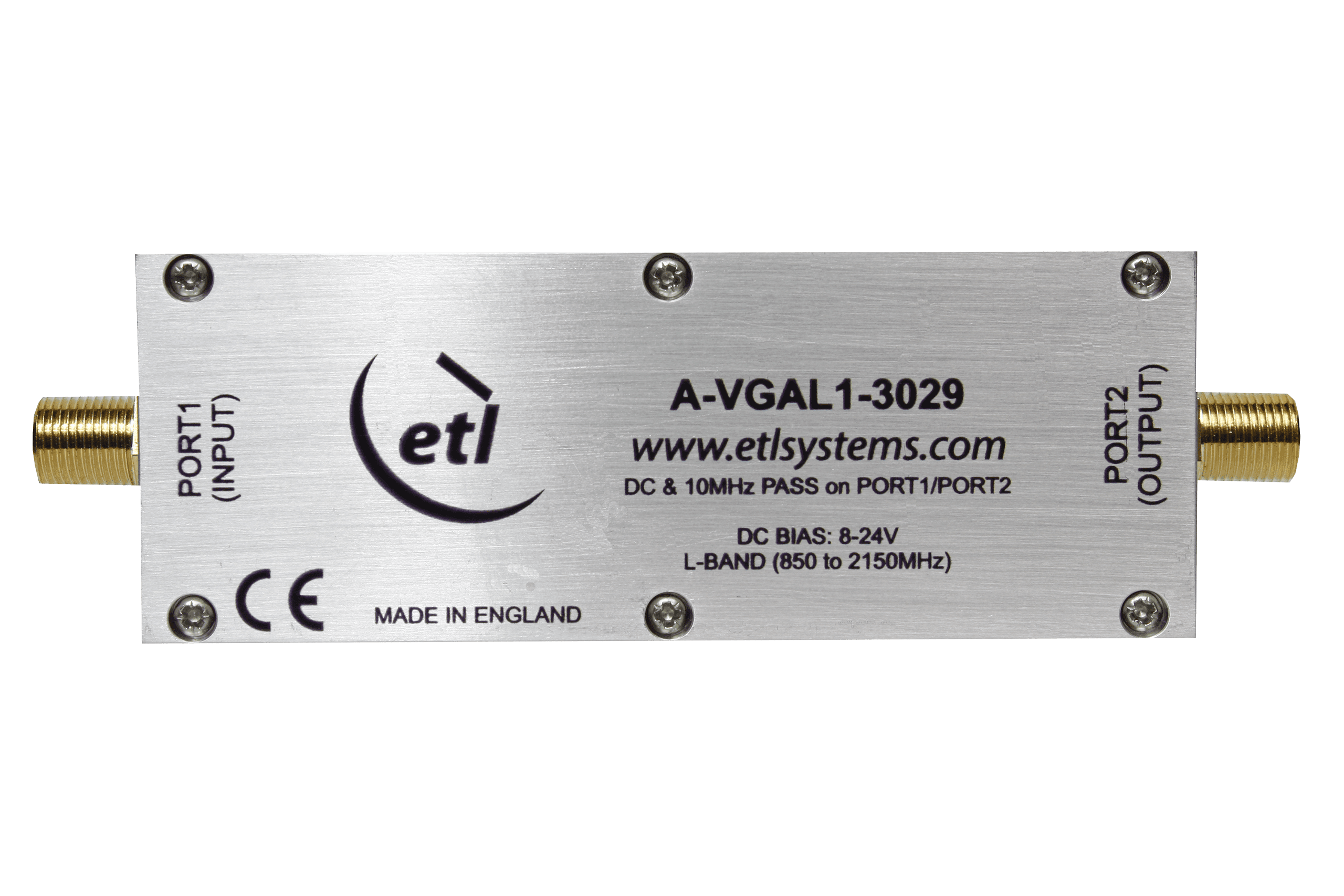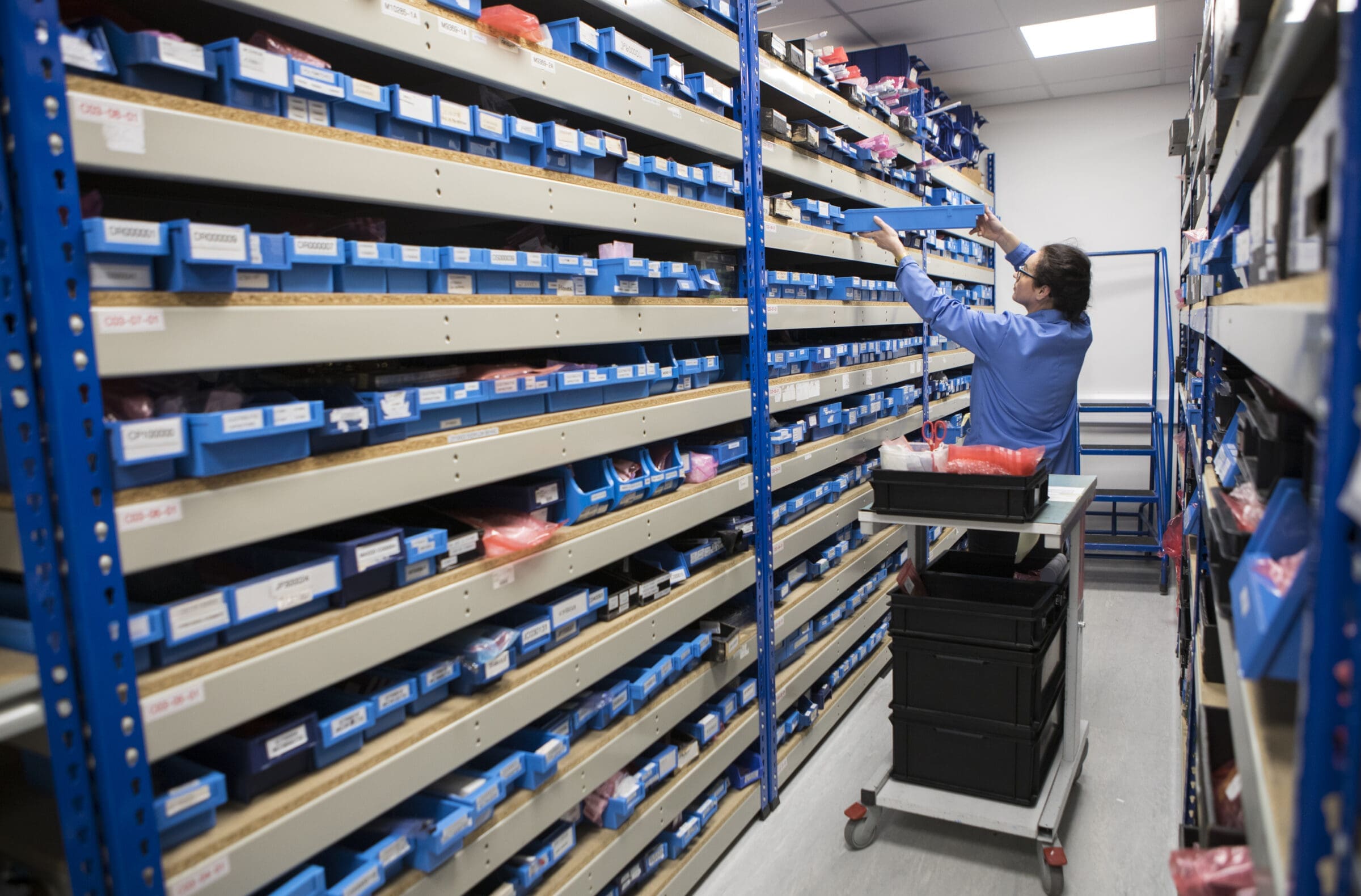| A-GABL1-3110-F7F7 | | | 850 | 2150 | MHz | 20 | 15 | 25 | 8 | +12V | | 850 | 2150 | mhz | 20 | 15 | 25 | 8 | 12v | |
| A-GABL1-3110-S5S5 | | | 850 | 2150 | MHz | 20 | 15 | 25 | 8 | +12V | | 850 | 2150 | mhz | 20 | 15 | 25 | 8 | 12v | |
| A-GABL1-3110-N5N5 | | | 850 | 2150 | MHz | 20 | 15 | 25 | 8 | +12V | | 850 | 2150 | mhz | 20 | 15 | 25 | 8 | 12v | |
| A-GABL1-3111-B7B7 | | | 850 | 2150 | MHz | 10 | 12 | 22 | 10 | +12V | | 850 | 2150 | mhz | 10 | 12 | 22 | 10 | 12v | |
| A-GABL1-3111-S5S5 | | | 850 | 2150 | MHz | 10 | 12 | 22 | 10 | +12V | | 850 | 2150 | mhz | 10 | 12 | 22 | 10 | 12v | |
| A-GABL1-3111-N5N5 | | | 850 | 2150 | MHz | 10 | 12 | 22 | 10 | +12V | | 850 | 2150 | mhz | 10 | 12 | 22 | 10 | 12v | |
| A-GABL1-3112-S5S5/1 | | | 850 | 2150 | MHz | 15 | 13 | 22 | 9 | +12V | | 850 | 2150 | mhz | 15 | 13 | 22 | 9 | 12v | |
| A-GABL1-3112-N5N5 | | | 850 | 2150 | MHz | 15 | 13 | 22 | 9 | +12V | | 850 | 2150 | mhz | 15 | 13 | 22 | 9 | 12v | |
| A-GABL1-3112-F7F7 | | | 850 | 2150 | MHz | 15 | 13 | 22 | 9 | +12V | | 850 | 2150 | mhz | 15 | 13 | 22 | 9 | 12v | |
| A-GABL1-3112-B7B7 | | | 850 | 2150 | MHz | 15 | 13 | 22 | 9 | +12V | | 850 | 2150 | mhz | 15 | 13 | 22 | 9 | 12v | |
| A-GABL1-3112-N5N5/1 | | | 850 | 2150 | MHz | 15 | 13 | 22 | 9 | +12V | | 850 | 2150 | mhz | 15 | 13 | 22 | 9 | 12v | |
| A-GABL1-3112-S5S5 | | | 850 | 2150 | MHz | 15 | 13 | 22 | 9 | +12V | | 850 | 2150 | mhz | 15 | 13 | 22 | 9 | 12v | |
| A-GABL1-3113-S5S5/1 | | | 850 | 2150 | MHz | 25 | 11 | 18 | 8 | +12V | Ext. solder feed thru | 850 | 2150 | mhz | 25 | 11 | 18 | 8 | 12v | ext-solder-feed-thru |
| A-GABL1-3113-F7F7 | | | 850 | 2150 | MHz | 25 | 11 | 18 | 8 | +12V | Ext. solder feed thru | 850 | 2150 | mhz | 25 | 11 | 18 | 8 | 12v | ext-solder-feed-thru |
| A-GABL1-3113-F7F7/1 | | | 850 | 2150 | MHz | 25 | 11 | 18 | 8 | +12V | Ext. solder feed thru | 850 | 2150 | mhz | 25 | 11 | 18 | 8 | 12v | ext-solder-feed-thru |
| A-GABL1-3114-F7F7 | | | 850 | 2150 | MHz | 30 | 15 | 25 | 8 | +12V | | 850 | 2150 | mhz | 30 | 15 | 25 | 8 | 12v | |
| A-GABL1-3114-B7B7 | | | 850 | 2150 | MHz | 30 | 15 | 25 | 8 | +12V | | 850 | 2150 | mhz | 30 | 15 | 25 | 8 | 12v | |
| A-GABL1-3114-N5N5 | | | 850 | 2150 | MHz | 30 | 15 | 25 | 8 | +12V | | 850 | 2150 | mhz | 30 | 15 | 25 | 8 | 12v | |
| A-GABL1-3131-N5N5 | | | 850 | 2150 | MHz | 10 | 15 | 22 | 10 | +12V | | 850 | 2150 | mhz | 10 | 15 | 22 | 10 | 12v | |
| A-GABL1-3131-S5S5 | | | 850 | 2150 | MHz | 10 | 15 | 22 | 10 | +12V | | 850 | 2150 | mhz | 10 | 15 | 22 | 10 | 12v | |
| A-GABL1-3132-F7F7 | | | 850 | 2150 | MHz | 15 | 15 | 25 | 10 | +12V | | 850 | 2150 | mhz | 15 | 15 | 25 | 10 | 12v | |
| A-GABL1-3133-N5N5 | | | 850 | 2150 | MHz | 25 | 15 | 25 | 8 | +12V | | 850 | 2150 | mhz | 25 | 15 | 25 | 8 | 12v | |
| A-GABL1-3133-S5S5 | | | 850 | 2150 | MHz | 25 | 15 | 25 | 8 | +12V | | 850 | 2150 | mhz | 25 | 15 | 25 | 8 | 12v | |
| A-GABL1-3133-F7F7 | | | 850 | 2150 | MHz | 25 | 15 | 25 | 8 | +12V | | 850 | 2150 | mhz | 25 | 15 | 25 | 8 | 12v | |
| A-GABL1-3134-N5N5 | | | 850 | 2150 | MHz | 30 | 15 | 25 | 8 | +12V | | 850 | 2150 | mhz | 30 | 15 | 25 | 8 | 12v | |
| A-GABL1-3134-F7F7 | | | 850 | 2150 | MHz | 30 | 15 | 25 | 8 | +12V | | 850 | 2150 | mhz | 30 | 15 | 25 | 8 | 12v | |
| A-GABL1-3134-S5S5 | | | 850 | 2150 | MHz | 30 | 15 | 25 | 8 | +12V | | 850 | 2150 | mhz | 30 | 15 | 25 | 8 | 12v | |
| A-GABL1-3140-F7F7 | | | 850 | 2150 | MHz | 20 | 15 | 25 | 8 | +12V | | 850 | 2150 | mhz | 20 | 15 | 25 | 8 | 12v | |
| A-GABL1-3140-N5N5 | | | 850 | 2150 | MHz | 20 | 15 | 25 | 8 | +12V | | 850 | 2150 | mhz | 20 | 15 | 25 | 8 | 12v | |
| A-GABL1-3140-S5S5 | | | 850 | 2150 | MHz | 20 | 15 | 25 | 8 | +12V | | 850 | 2150 | mhz | 20 | 15 | 25 | 8 | 12v | |
| A-GABL1-3141-F7F7 | | | 850 | 2150 | MHz | 10 | 15 | 27 | 12 | +12V | | 850 | 2150 | mhz | 10 | 15 | 27-3 | 12-9 | 12v | |
| A-GABL1-3141-N5N5 | | | 850 | 2150 | MHz | 10 | 15 | 27 | 12 | +12V | | 850 | 2150 | mhz | 10 | 15 | 27-3 | 12-9 | 12v | |
| A-GABL1-3141-S5S5 | | | 850 | 2150 | MHz | 10 | 15 | 27 | 12 | +12V | | 850 | 2150 | mhz | 10 | 15 | 27-3 | 12-9 | 12v | |
| A-GABL1-3143-B7B7 | | | 850 | 2150 | MHz | 25 | 12 | 23 | 8 | +12V | | 850 | 2150 | mhz | 25 | 12 | 23-3 | 8 | 12v | |
| A-GABL1-3143-N5N5 | | | 850 | 2150 | MHz | 25 | 12 | 23 | 8 | +12V | | 850 | 2150 | mhz | 25 | 12 | 23-3 | 8 | 12v | |
| A-GABL1-3143-S5S5 | | | 850 | 2150 | MHz | 25 | 12 | 23 | 8 | +12V | | 850 | 2150 | mhz | 25 | 12 | 23-3 | 8 | 12v | |
| A-GABL1-3207-F7F7 | | | 850 | 2150 | MHz | 15 | 15 | 25 | 7 | +12V | | 850 | 2150 | mhz | 15 | 15 | 25 | 7 | 12v | |
| A-GABL1-3207-B5B5 | | | 850 | 2150 | MHz | 15 | 15 | 25 | 7 | +12V | | 850 | 2150 | mhz | 15 | 15 | 25 | 7 | 12v | |
| A-GABL1-3207-N5N5 | | | 850 | 2150 | MHz | 15 | 15 | 25 | 7 | +12V | | 850 | 2150 | mhz | 15 | 15 | 25 | 7 | 12v | |
| A-GABL1-3207-S5S5 | | | 850 | 2150 | MHz | 15 | 15 | 25 | 7 | +12V | | 850 | 2150 | mhz | 15 | 15 | 25 | 7 | 12v | |
| A-GABL1-3208-F7F7 | | | 850 | 2150 | MHz | 20 | 12 | 23 | 8 | +12V | | 850 | 2150 | mhz | 20 | 12 | 23-3 | 8 | 12v | |
| A-GABL1-3208-S5S5 | | | 850 | 2150 | MHz | 20 | 12 | 23 | 8 | +12V | | 850 | 2150 | mhz | 20 | 12 | 23-3 | 8 | 12v | |
| A-GABL1-3208-N5N5 | | | 850 | 2150 | MHz | 20 | 12 | 23 | 8 | +12V | | 850 | 2150 | mhz | 20 | 12 | 23-3 | 8 | 12v | |
| A-GABL1-3210-N5N5 | | | 850 | 2150 | MHz | 30 | 17 | 23 | 7 | +12V | | 850 | 2150 | mhz | 30 | 17-4 | 23-3 | 7 | 12v | |
| A-GABL1-3210-S5S5 | | | 850 | 2150 | MHz | 30 | 17 | 23 | 7 | +12V | | 850 | 2150 | mhz | 30 | 17-4 | 23-3 | 7 | 12v | |
| A-GABL1-3213-B7B7 | | | 850 | 2150 | MHz | 10 | 18 | 28 | 13 | +12V | | 850 | 2150 | mhz | 10 | 18-9 | 28-3 | 13-6 | 12v | |
| A-GABL1-3213-S5S5 | | | 850 | 2150 | MHz | 10 | 18 | 28 | 13 | +12V | | 850 | 2150 | mhz | 10 | 18-9 | 28-3 | 13-6 | 12v | |
| A-GABL1-3214-S5S5 | | | 850 | 2150 | MHz | 20 | 18 | 28 | 10 | +12V | | 850 | 2150 | mhz | 20 | 18-9 | 28-3 | 10 | 12v | |
| A-GABL1-3214-F7F7 | | | 850 | 2150 | MHz | 20 | 18 | 28 | 10 | +12V | | 850 | 2150 | mhz | 20 | 18-9 | 28-3 | 10 | 12v | |
| A-GABL1-3217-N5N5 | | | 850 | 2150 | MHz | 20 | 15 | 23 | 9 | +12V | | 850 | 2150 | mhz | 20 | 15 | 23-3 | 9 | 12v | |
| A-GABL1-3217-F7F7 | | | 850 | 2150 | MHz | 20 | 15 | 23 | 9 | +12V | | 850 | 2150 | mhz | 20 | 15 | 23-3 | 9 | 12v | |
| A-GABL1-3217-S5S5 | | | 850 | 2150 | MHz | 20 | 15 | 23 | 9 | +12V | | 850 | 2150 | mhz | 20 | 15 | 23-3 | 9 | 12v | |
| A-GABL1-3219-N5N5 | | | 850 | 2150 | MHz | 10 | 12 | 20 | 13 | +12V | | 850 | 2150 | mhz | 10 | 12 | 20-8 | 13-6 | 12v | |
| A-GABL1-3220-B5B5 | | | 850 | 2150 | MHz | 15 | 16 | 22 | 10 | +12V | | 850 | 2150 | mhz | 15 | 16-6 | 22 | 10 | 12v | |
| A-GABL1-3220-N5N5 | | | 850 | 2150 | MHz | 15 | 16 | 22 | 10 | +12V | | 850 | 2150 | mhz | 15 | 16-6 | 22 | 10 | 12v | |
| A-GABL1-3222-F7F7 | | | 850 | 2150 | MHz | 30 | 18 | 28 | 10 | +12V | | 850 | 2150 | mhz | 30 | 18-9 | 28-3 | 10 | 12v | |
| A-GABL1-3222-B7B7 | | | 850 | 2150 | MHz | 30 | 18 | 28 | 10 | +12V | | 850 | 2150 | mhz | 30 | 18-9 | 28-3 | 10 | 12v | |
| A-GABL1-3222-S5S5 | | | 850 | 2150 | MHz | 30 | 18 | 28 | 10 | +12V | | 850 | 2150 | mhz | 30 | 18-9 | 28-3 | 10 | 12v | |
| A-GABL1-3222-N5N5 | | | 850 | 2150 | MHz | 30 | 18 | 28 | 10 | +12V | | 850 | 2150 | mhz | 30 | 18-9 | 28-3 | 10 | 12v | |
| A-VGAL1-3011-N5N5 | | | 850 | 2150 | MHz | | 15 | 30 | 8 | +24V | | 850 | 2150 | mhz | | 15 | 30-4 | 8 | 24v | |
| A-VGAL1-3013-N5N5 | | | 850 | 2150 | MHz | | 15 | 30 | 8 | +24V | | 850 | 2150 | mhz | | 15 | 30-4 | 8 | 24v | |
| A-VGAL1-3014-F7F7 | | | 850 | 2150 | MHz | | 15 | 30 | 8 | +24V | | 850 | 2150 | mhz | | 15 | 30-4 | 8 | 24v | |
| A-VGAL1-3014-B5B5 | | | 850 | 2150 | MHz | | 15 | 30 | 8 | +24V | | 850 | 2150 | mhz | | 15 | 30-4 | 8 | 24v | |
| A-VGAL1-3014-N5N5 | | | 850 | 2150 | MHz | | 15 | 30 | 8 | +24V | | 850 | 2150 | mhz | | 15 | 30-4 | 8 | 24v | |
| A-VGAL1-3016-S5S5 | | | 850 | 2150 | MHz | | 15 | 30 | 8 | +12V | | 850 | 2150 | mhz | | 15 | 30-4 | 8 | 12v | |
| A-VGAL1-3016-F7F7 | | | 850 | 2150 | MHz | | 15 | 30 | 8 | +12V | | 850 | 2150 | mhz | | 15 | 30-4 | 8 | 12v | |
| A-VGAL1-3016-N5N5 | | | 850 | 2150 | MHz | | 15 | 30 | 8 | +12V | | 850 | 2150 | mhz | | 15 | 30-4 | 8 | 12v | |
| A-VGAL1-3016-N5N5/1 | | | 850 | 2150 | MHz | | 15 | 30 | 8 | +12V | | 850 | 2150 | mhz | | 15 | 30-4 | 8 | 12v | |
| A-VGAL1-3018-F7F7 | | | 850 | 2150 | MHz | | 15 | 30 | 8 | +24V | | 850 | 2150 | mhz | | 15 | 30-4 | 8 | 24v | |
| A-VGAL1-3018-N5N5/1 | | | 850 | 2150 | MHz | | 15 | 30 | 8 | +24V | | 850 | 2150 | mhz | | 15 | 30-4 | 8 | 24v | |
| A-VGAL1-3018-N5N5 | | | 850 | 2150 | MHz | | 15 | 30 | 8 | +24V | | 850 | 2150 | mhz | | 15 | 30-4 | 8 | 24v | |
| A-VGAL1-3019-S5S5 | | | 850 | 2150 | MHz | | 15 | 30 | 8 | +24V | | 850 | 2150 | mhz | | 15 | 30-4 | 8 | 24v | |
| A-VGAL1-3019-F7F7 | | | 850 | 2150 | MHz | | 15 | 30 | 8 | +24V | | 850 | 2150 | mhz | | 15 | 30-4 | 8 | 24v | |
| A-VGAL1-3019-S5S5/M |  | | 850 | 2150 | MHz | | 15 | 30 | 8 | +24V | | 850 | 2150 | mhz | | 15 | 30-4 | 8 | 24v | |
| A-VGAL1-3019-N5N5 | | | 850 | 2150 | MHz | | 15 | 30 | 8 | +24V | | 850 | 2150 | mhz | | 15 | 30-4 | 8 | 24v | |
| A-VGAL1-3025-B5B5 | | | 850 | 2150 | MHz | | 15 | 27 | 12 | +12V | | 850 | 2150 | mhz | | 15 | 27-3 | 12-9 | 12v | |
| A-VGAL1-3025-S5S5 | | | 850 | 2150 | MHz | | 15 | 27 | 12 | +12V | | 850 | 2150 | mhz | | 15 | 27-3 | 12-9 | 12v | |
| A-VGAL1-3025-N5N5 | | | 850 | 2150 | MHz | | 15 | 27 | 12 | +12V | | 850 | 2150 | mhz | | 15 | 27-3 | 12-9 | 12v | |
| A-VGAL1-3026-B5B5 | | | 850 | 2150 | MHz | | 18 | 27 | 12 | +12V | | 850 | 2150 | mhz | | 18-9 | 27-3 | 12-9 | 12v | |
| A-VGAL1-3026-N5N5 | | | 850 | 2150 | MHz | | 18 | 27 | 12 | +12V | | 850 | 2150 | mhz | | 18-9 | 27-3 | 12-9 | 12v | |
| A-VGAL1-3026-S5S5 | | | 850 | 2150 | MHz | | 18 | 27 | 12 | +12V | | 850 | 2150 | mhz | | 18-9 | 27-3 | 12-9 | 12v | |
| A-VGAL1-3027-N5N5/1 | | | 850 | 2150 | MHz | | 18 | 27 | + | +12V | | 850 | 2150 | mhz | | 18-9 | 27-3 | 580 | 12v | |
| A-VGAL1-3027-N5N5 | | | 850 | 2150 | MHz | | 18 | 27 | 12 | +12V | | 850 | 2150 | mhz | | 18-9 | 27-3 | 12-9 | 12v | |
| A-VGAL1-3027-F7F7 | | | 850 | 2150 | MHz | | 18 | 27 | 12 | +12V | | 850 | 2150 | mhz | | 18-9 | 27-3 | 12-9 | 12v | |
| A-VGAL1-3027-S5S5 | | | 850 | 2150 | MHz | | 18 | 27 | 12 | +12V | | 850 | 2150 | mhz | | 18-9 | 27-3 | 12-9 | 12v | |
| A-VGAL1-3028-N5N5 | | | 850 | 2150 | MHz | | 18 | 27 | 12 | +12V | | 850 | 2150 | mhz | | 18-9 | 27-3 | 12-9 | 12v | |
| A-VGAL1-3028-S5S5 | | | 850 | 2150 | MHz | | 18 | 27 | 12 | +12V | | 850 | 2150 | mhz | | 18-9 | 27-3 | 12-9 | 12v | |
| A-VGAL1-3029-B7B7 | | | 850 | 2150 | MHz | | 18 | 27 | 12 | +12V | | 850 | 2150 | mhz | | 18-9 | 27-3 | 12-9 | 12v | |
| A-VGAL1-3029-N5N5 | | | 850 | 2150 | MHz | | 18 | 27 | 12 | +12V | | 850 | 2150 | mhz | | 18-9 | 27-3 | 12-9 | 12v | |
| A-VGAL1-3029-S5S5 | | | 850 | 2150 | MHz | | 18 | 27 | 12 | +12V | | 850 | 2150 | mhz | | 18-9 | 27-3 | 12-9 | 12v | |
| A-VGAL1-3029-F7F7 | | | 850 | 2150 | MHz | | 18 | 27 | 12 | +12V | | 850 | 2150 | mhz | | 18-9 | 27-3 | 12-9 | 12v | |
| A-VGAL1-3030-F7F7 | | | 850 | 2150 | MHz | | 18 | 27 | 12 | +12V | | 850 | 2150 | mhz | | 18-9 | 27-3 | 12-9 | 12v | |
| A-VGAL1-3030-N5N5 | | | 850 | 2150 | MHz | | 18 | 27 | 12 | +12V | | 850 | 2150 | mhz | | 18-9 | 27-3 | 12-9 | 12v | |
| A-VGAL1-3053-B7B7 | | | 850 | 2150 | MHz | | 18 | 27 | 12 | +12V | | 850 | 2150 | mhz | | 18-9 | 27-3 | 12-9 | 12v | |
| A-VGAL1-3053-N5N5 | | | 850 | 2150 | MHz | | 18 | 27 | 12 | +12V | | 850 | 2150 | mhz | | 18-9 | 27-3 | 12-9 | 12v | |
| A-VGAL1-310002-N5N5 | | | 850 | 2150 | MHz | | 15 | 25 | 9 | +28V | | 850 | 2150 | mhz | | 15 | 25 | 9 | 28v | |
| A-VGAL1-310002-S5S5 | | | 850 | 2150 | MHz | | 15 | 25 | 9 | +28V | | 850 | 2150 | mhz | | 15 | 25 | 9 | 28v | |
| ODU-3014-F7F7 | | | 850 | 2450 | MHz | | 15 | 30 | 9 | +24V | | 850 | 2450 | mhz | | 15 | 30-4 | 9 | 24v | |
| ODU-3014-N5N5 | | | 850 | 2450 | MHz | | 15 | 30 | 9 | +24V | | 850 | 2450 | mhz | | 15 | 30-4 | 9 | 24v | |
| ODU-3014-S5S5 | | | 850 | 2450 | MHz | | 15 | 30 | 9 | +24V | | 850 | 2450 | mhz | | 15 | 30-4 | 9 | 24v | |
| ODU-3053-F7F7 | | | 850 | 2150 | MHz | | 18 | 27 | 12 | +12V | | 850 | 2150 | mhz | | 18-9 | 27-3 | 12-9 | 12v | |



